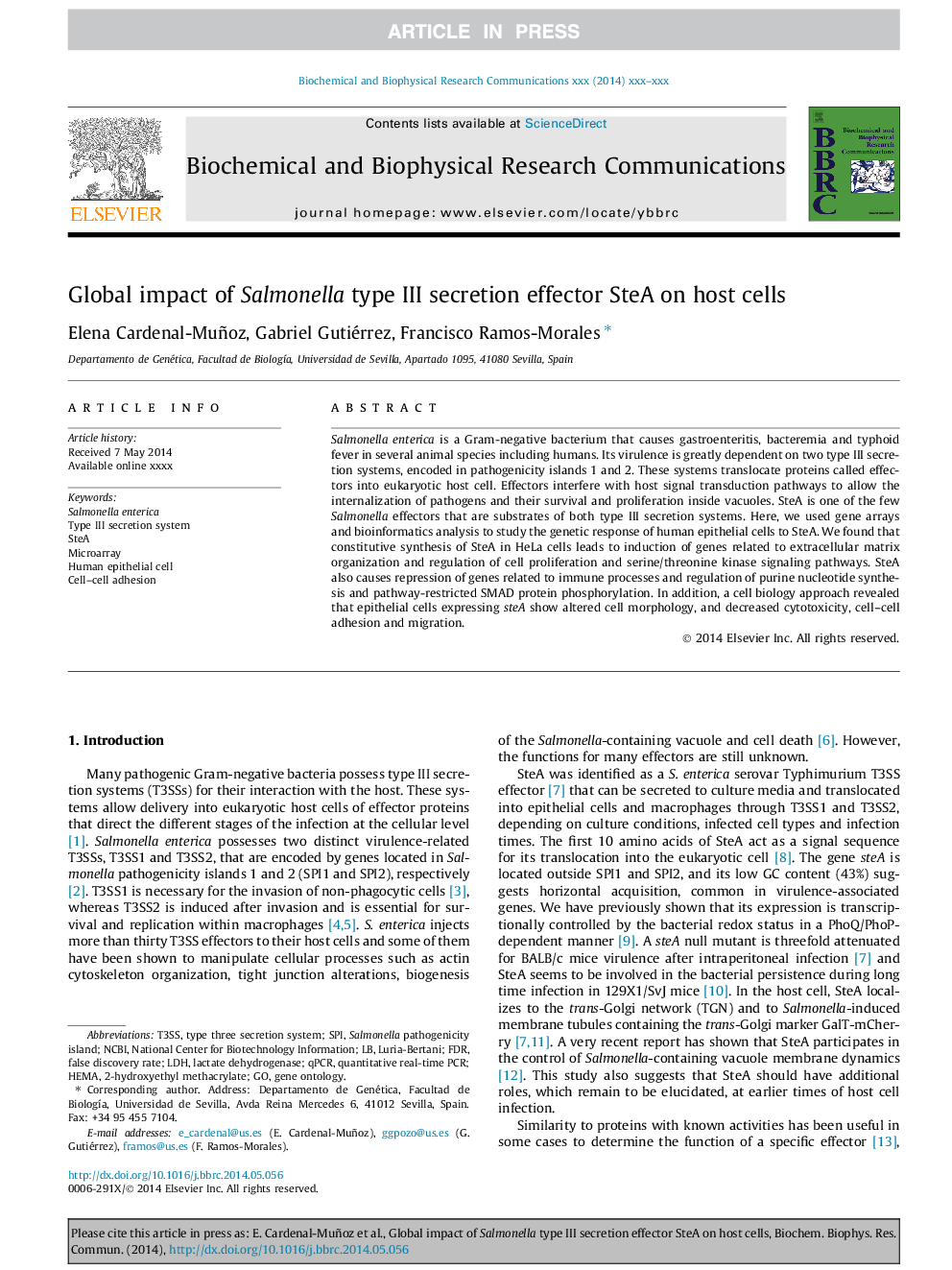| Article ID | Journal | Published Year | Pages | File Type |
|---|---|---|---|---|
| 10754791 | Biochemical and Biophysical Research Communications | 2014 | 6 Pages |
Abstract
Salmonella enterica is a Gram-negative bacterium that causes gastroenteritis, bacteremia and typhoid fever in several animal species including humans. Its virulence is greatly dependent on two type III secretion systems, encoded in pathogenicity islands 1 and 2. These systems translocate proteins called effectors into eukaryotic host cell. Effectors interfere with host signal transduction pathways to allow the internalization of pathogens and their survival and proliferation inside vacuoles. SteA is one of the few Salmonella effectors that are substrates of both type III secretion systems. Here, we used gene arrays and bioinformatics analysis to study the genetic response of human epithelial cells to SteA. We found that constitutive synthesis of SteA in HeLa cells leads to induction of genes related to extracellular matrix organization and regulation of cell proliferation and serine/threonine kinase signaling pathways. SteA also causes repression of genes related to immune processes and regulation of purine nucleotide synthesis and pathway-restricted SMAD protein phosphorylation. In addition, a cell biology approach revealed that epithelial cells expressing steA show altered cell morphology, and decreased cytotoxicity, cell-cell adhesion and migration.
Keywords
qPCR2-hydroxyethyl methacrylateFDRSPINCBIT3SSSalmonella entericaSalmonella pathogenicity islandMicroarrayhuman epithelial cellType three secretion systemType III secretion systemlactate dehydrogenaseLDHLuria-BertaniNational Center for Biotechnology Informationfalse discovery rateGene ontologyHEMAquantitative real-time PCRCell–cell adhesion
Related Topics
Life Sciences
Biochemistry, Genetics and Molecular Biology
Biochemistry
Authors
Elena Cardenal-Muñoz, Gabriel Gutiérrez, Francisco Ramos-Morales,
